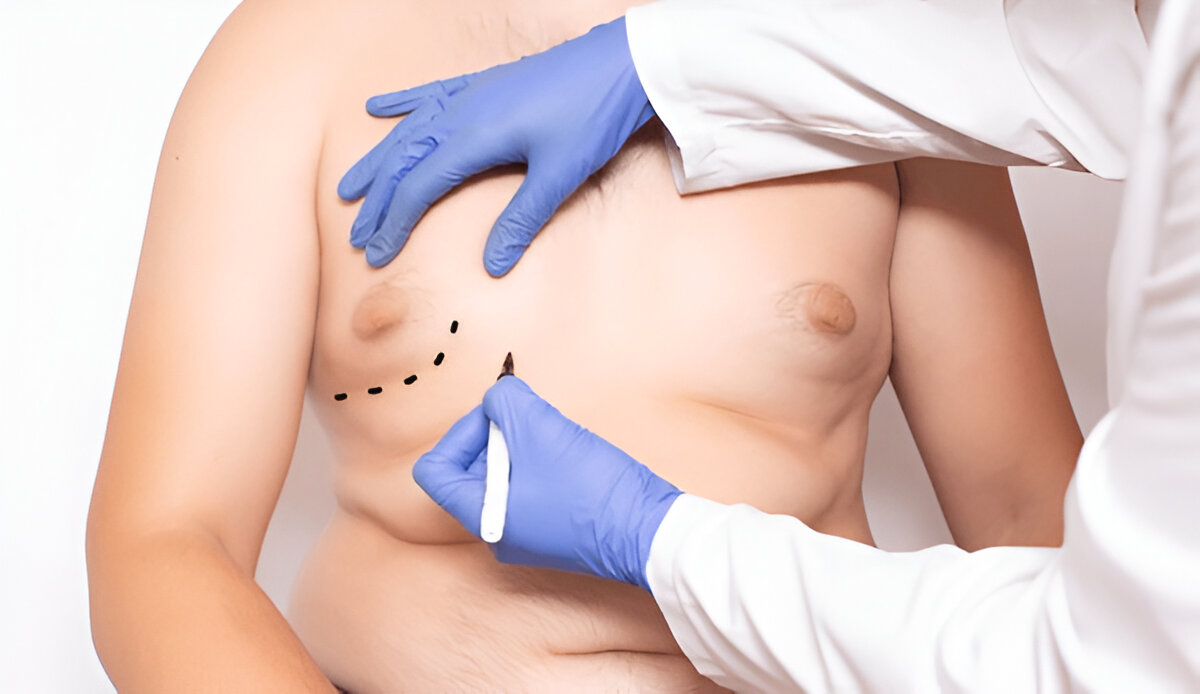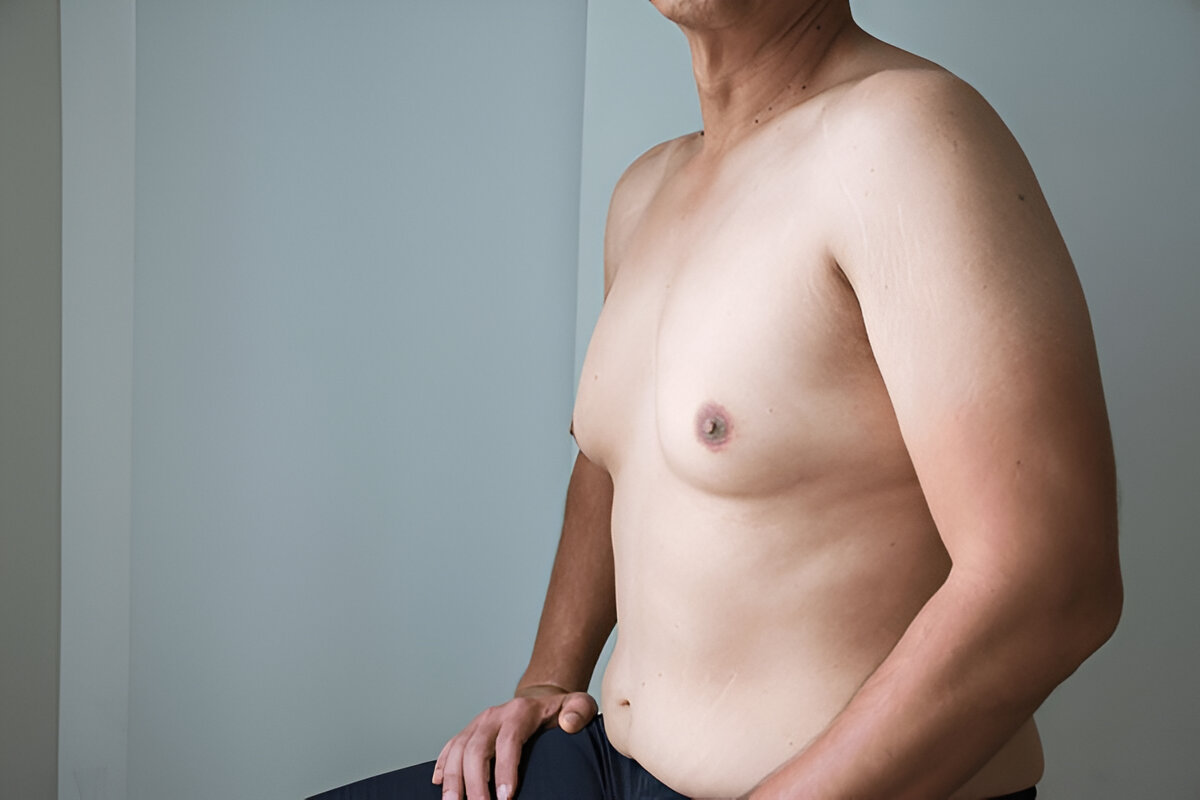Why Is My Left Breast Bigger Than the Right in Males?
For many men, concerns about their chest appearance can be a source of significant self-consciousness. One common worry is breast asymmetry, where one breast appears noticeably larger than the other. The question of uneven breast size—especially when the left is larger—is common among males and usually has a medical explanation.
Dr. Hasan Ali, a renowned Gynecomastia Specialist & Board Certified Plastic Surgeon for Gynecomastia in Dubai, frequently addresses this question.
While perfectly symmetrical bodies are rare, significant breast asymmetry in men can be concerning. This detailed guide examines why the left breast may be larger than the right in males, highlighting possible causes and when to seek medical advice.
The reality of asymmetry: It's more common than you think
It’s important to acknowledge that a degree of asymmetry is quite common in the human body. Just as one hand might be slightly larger than the other, subtle differences in breast size between the left and right sides are not unusual in men. However, when the difference becomes pronounced and noticeable, it can lead to anxiety and a desire for understanding.


Potential causes: Why one breast might be larger
Several factors can contribute to one breast being larger than the other in males. These include:
1- Normal physiological variation: In some cases, the asymmetry might be a part of natural development. Just as growth spurts can occur unevenly, breast tissue development can sometimes vary slightly between the two sides. This could explain why the asymmetry is mild and has been present for a long time without significant change.
2- Gynecomastia: This is a common condition in males characterized by the enlargement of breast tissue. Often occurring unevenly, gynecomastia can involve one or both breasts.
Its causes range from hormonal shifts (like those seen in puberty), side effects of medications, and health conditions, to changes in weight or even unexplained origins. If the larger breast feels more glandular or firmer than the other, gynecomastia is a likely culprit.
3- Pseudogynecomastia (Lipomastia): This refers to the appearance of enlarged breasts due to excess fat rather than glandular tissue. While typically affecting both breasts, the fat distribution can sometimes be uneven, making one side appear larger.
4- Puberty: Hormonal fluctuations during puberty can cause temporary gynecomastia, which can sometimes manifest asymmetrically. In most cases, it goes away naturally once hormone levels return to normal. However, further evaluation may be needed if the asymmetry is significant or persists.
5- Medications: A number of medications, including specific antidepressants, anti-anxiety drugs, anabolic steroids, and those used to treat hypertension or ulcers, can trigger gynecomastia, sometimes causing uneven breast development.
6- Underlying medical conditions: In rare cases, asymmetrical breast enlargement could be a sign of an underlying medical condition, such as a testicular tumor (which can affect hormone levels) or, very rarely, breast cancer (though this is much less common in men and usually presents with other concerning signs like a hard, fixed lump).
7- Previous injury or surgery: Trauma or prior surgery to one side of the chest could potentially affect tissue development or fat distribution, leading to asymmetry.
When should you be concerned?
While mild asymmetry is often typical, sure signs should prompt you to seek medical evaluation:
- Sudden onset of asymmetry: If the difference in size has developed recently.
- Rapid growth of one breast: A noticeable increase in the size of one breast over a short period.
- Pain or tenderness in the larger breast.
- The presence of a lump or firm area, especially if it feels different from the surrounding tissue.
- Nipple discharge or inversion.
- Skin changes include redness, dimpling, or scaling on the breast skin.
Such symptoms may point to a more serious condition that needs proper medical evaluation and treatment.
Addressing "Why is the left breast bigger than the right in males?" Specifically
There isn’t a specific reason why the left breast would inherently be more prone to enlargement than the right in males.
The causes listed above can affect either side. If you specifically notice that your “left breast is bigger than the right,” the underlying reason could still be any of the factors mentioned, such as asymmetrical gynecomastia, uneven fat distribution, or, less commonly, other medical conditions.
Focusing on the specific side doesn’t change the potential causes; it simply highlights where the asymmetry is most apparent for you.
Diagnosis and treatment options
If you are concerned about breast asymmetry, the first step is a consultation with a medical professional like Dr. Hasan Ali. He can perform a physical examination, review your medical history, and potentially recommend further tests, such as:
- Physical exam: To assess the size, texture, and other abnormalities in the breast tissue.
- Blood tests: To check hormone levels.
- Mammogram or ultrasound: To visualize the breast tissue and differentiate between glandular tissue, fat, and suspicious masses.
The treatment for asymmetrical breasts in males will depend entirely on the underlying cause:
- Observation: Observation may be the best approach if the asymmetry is mild, does not cause any other symptoms, and if serious causes have been ruled out.
- Medication: If gynecomastia is due to a hormonal imbalance or certain medications, addressing the underlying cause may help.
- Gynecomastia surgery: If the asymmetry is bothersome and due to gynecomastia, surgical removal of the excess glandular tissue and/or liposuction can effectively create a more symmetrical chest contour. This is a specialized procedure offered by Dr. Hasan Ali.
- Treatment of underlying medical conditions: If the asymmetry is a symptom of another health issue, treating that condition will be the priority.
Your journey to a more balanced chest
Dealing with breast asymmetry can be emotionally challenging. Dr. Hasan Ali is committed to addressing these concerns with accurate diagnosis and tailored treatment plans.
If you’re asking, “Why is my left breast bigger than the right in males?” or noticing any significant changes in your chest appearance, we encourage you to schedule a consultation.
We can help you understand the cause of the asymmetry and explore the best way to achieve a more balanced and confident you. Book an appointment now.
